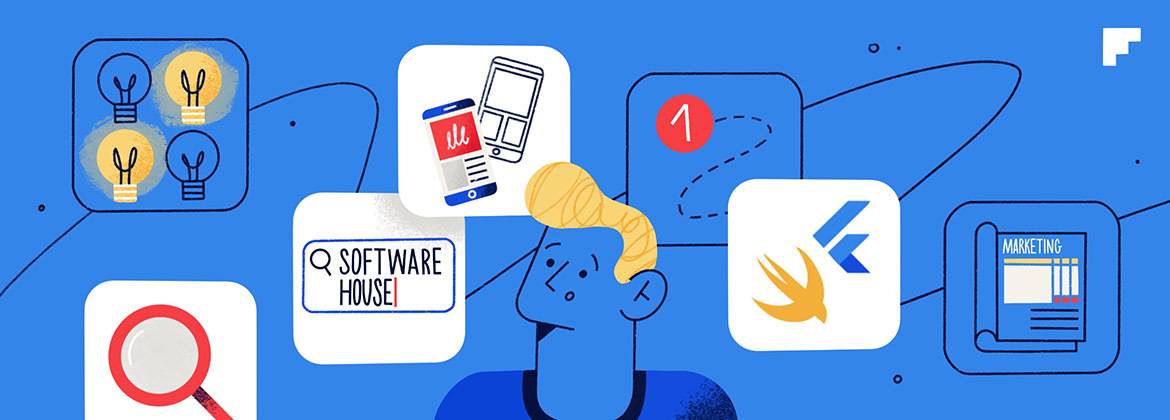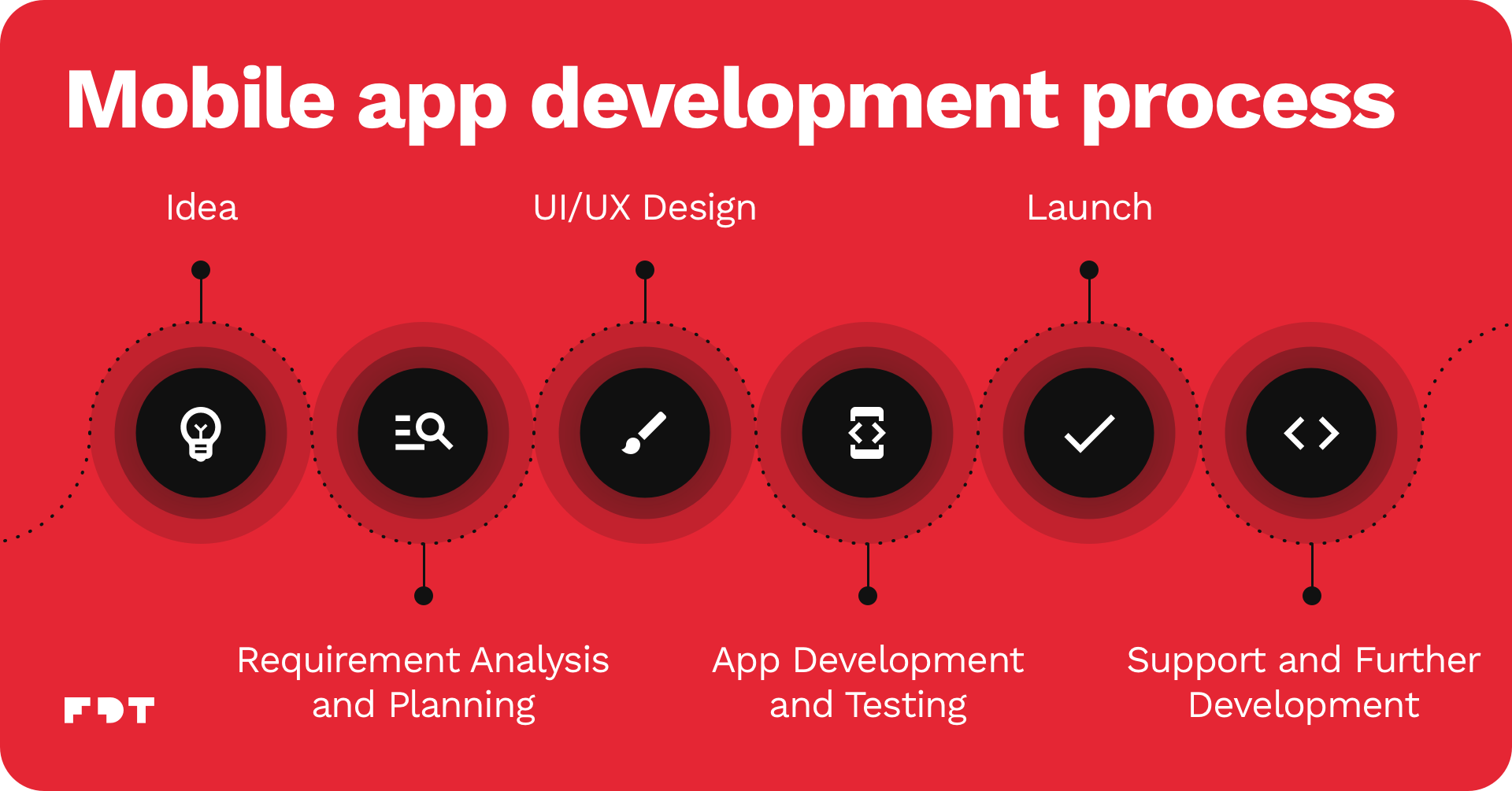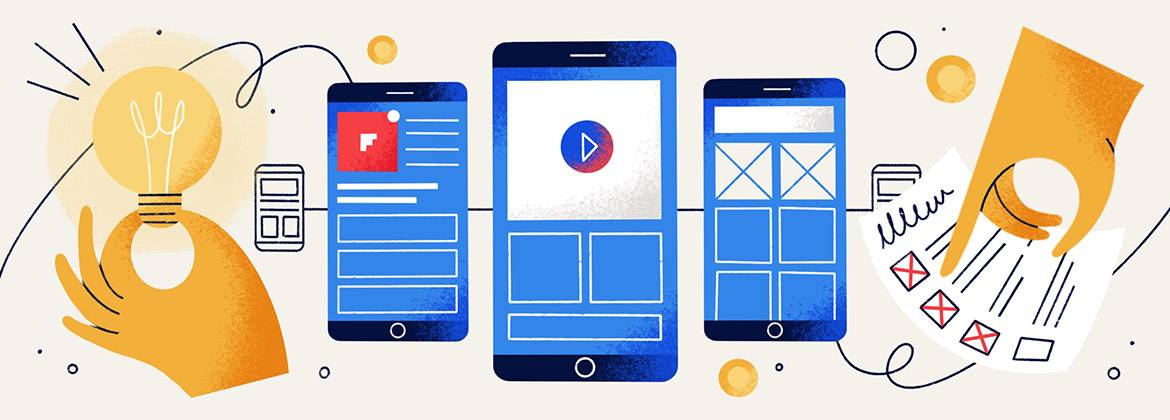
7 things you should know before developing an app
Are you planning a software development for your business? Have you come up with an idea for a mobile/web app to grow your business or to start a new one? This is a place for you.
In this article I’ll describe 7 things you should know before starting an app development so you can be 100% aware of what you should do next.
If you have an idea or materials but aren't sure how to make good use of them, this guide will show you how to get prepared to develop a successful app for your business.
Contents
Your idea doesn’t have to be innovative
First thing to know is that your idea doesn’t necessarily have to be innovative. You can hit the market with an idea that already exists but has been, for example, poorly executed. Sometimes it’s about creating a product similar to others but:
- of better quality,
- of better design,
- offering additional features (insufficiently developed or missing in other apps),
- well-promoted.
Sometimes, it’s a matter of details that make one app more popular than another.
Thousands of new apps are created every month. For example, in the Google Play app store, in the first quarter of 2021, over 3.48 million mobile apps were available, representing an increase of more than 10% compared to the previous quarter. Apple App Store represented a 6.1% increase in the same period (2.22 million mobile apps available).
Do you think you can come up with a completely new idea? It’s probably impossible. That’s why it’s best to focus on creating a great product that will serve users better than other ones and that offer some new (though maybe similar) features they need.
In-depth market research is crucial
Since it would be difficult to provide an absolutely innovative product, the question to ask is: how is my mobile app going to be better than the others? To find out, you need to thoroughly research the products already available on the market and learn about the needs of their users. App market research is the first thing you need to do before you decide to develop an app. It will also make you fully aware of what is described in section number 1.
Mobile app development is the later stage we’ll get to, but before that, many things need to happen. Start with looking for mobile apps which more or less meet your assumptions. List them and describe their features to compare them with your ideas.
Competitors list
Make a competitors list where you’ll pay attention to market conditions. You can put it on a table to make it easy to read and compare.
A sample template of what you can include in the research:
- App name — simply put the name of a competitive mobile app
- Target Audience — who uses the app and why? What needs do these users have? You can also try to estimate the number of users
- Value Proposition — what value the application offers to meet expectations of the target audience?
- Business Model — how does a competitor make money from a product? Is it a paid app, or are they using it for promotional purposes? Are there ads in the app? Or maybe they have a subscription-based revenue model?
- Feature Gap — what do you think the mobile app lacks? What else would you offer for its users?.
You can also add information about the operating system the app is available for.
Competitor features comparison
Then, you can move to listing all the features available in the competitive apps and compare them. This will make it much easier for you to identify what's missing in these mobile apps, what's required, what's useful and what's unnecessary. Make it simple: for each app put an app name, feature 1, feature 2 etc.
Read our article about competitive analysis and take a look at our free to download competitor analysis template.
User persona
In order to tailor your product to the audience, you need to create a user persona. It’s a semi-fictional character based on your current (or ideal) customer. On the basis of your customers or target audience and comparisons, try to understand future user’s needs, problems, pains, goals etc. You can also find information about demographic data, e.g. age, gender, personality. It all comes down to determining the features and design of the app you want to create.
Here is a step-by-step guide on how to create a user persona and here you can find our free template to make it happen easily.
Spend some time looking for the right people
You have different options. For example, you can go with:
- a software house — a mobile app development company whose main or sole activity is creating apps,
- freelancers — independent, self-employed people who earn wages on a per-job or per-task basis, typically for short-term work,
- an in-house team you can create on your own.
Don't make that mistake — don't start working with someone who offers the lowest price or someone you know nothing about and haven’t heard/seen opinions on. Finding the right fit for your needs will take some time, but it's definitely worth it.
App development isn’t only about programming the features you need. It should be a long-term cooperation to collect your requirements, give advice on them or even help you determining the features (especially if you don’t have experience in mobile app development), create fit-for-purpose designs, write the code, test it (repeatedly), launch the product on mobile app store (or stores), maintain and update it.
As you can see, there are a few people involved in the process. Apart from app developers, to make it all finely-tuned, you’ll also need a project manager, designer(s) and quality assurance specialists (testers).
There are different things to take into consideration when looking for the team you need to build your app. To find out what they are, jump to 5 tips on how to find the right mobile app development team.
Communication before and during the project
One of the most important (and very often undervalued) things in the mobile app development process is the communication between the business owner and the development team. It’s not only about their experience — you need to get along well with the team to make it work. Just because you like the website and their portfolio does not mean there will be good communication. So the best advice is just: talk to them. If the communication doesn’t satisfy you, let it go and find a better fitted partner to develop your mobile app.
Consider developing an MVP
Here’s a solution for those who are in a rush or don’t have enough funding for a complex product: Minimum viable product. You don’t have to look for a company or a freelancer who will develop your mobile app fast and cheap when you can build an MVP — a product with a minimum set of features needed to work properly and to test its viability. You can build this kind of app to save money and time and to see if the product idea was a good one. It’s not much different from any other mobile app. It simply contains less features than a complex solution and can have a simpler design. Usually when building a minimum viable product you aim to expand it later. Of course, if the first version met your expectations.
It’s a good opportunity to find investors or start making money for further development earlier. Definitely a great idea for the start.
Find an article digging into the details of MVPs’ features here.
Software development process
To be well prepared for app development you should know what the whole process looks like. As mentioned earlier, it’s not only developers who take part in it. When working with a software house, from the very beginning, the team can help you with analyses and market research. Workshops are often involved. Then there comes the time to create the design, which includes building wireframes, a prototype, hi-fi screens and the final version. If everything looks right, programmers start development, the app is tested and then they release the app on the mobile app store. However, this is not the end of the collaboration, because then the app needs to be maintained and updated. See a simplified picture of the process in the infographic below and check out an article about roles in mobile app development projects.
This is why great communication is so important. You need to be in touch with the team at all times to make sure the work goes smoothly and everything meets your requirements.

Explore possible technological solutions for your mobile app
When deciding to proceed with app development, there are different technologic paths for you to choose. The development team is of course there to advice about it, but to show you the overview, it looks like this:
- You can go with native apps — a software program developed for use on a particular platform (a native app for Android and/or a native app for iOS) or device written in programming languages native to each platform,
- It can be a web app accessed via a web browser, which is fairly easy to build,
- You can choose a mix of both — hybrid and cross-platform apps — to accomplish a great performance at a lower cost.
Native apps are always a good choice when you strive to create a very high-performance, complex and fit-for-purpose product, and you don’t have to save time and resources. A particularly important advantage of native apps is that they can take full advantage of the device features and latest system updates. They enable using all the features of the device, such as voice search, Google/Apple Pay, GPS navigation, system notifications, so you can take care of a great user experience.
Web apps cannot be downloaded from mobile stores. They provide various functionalities but don’t work offline. Most web apps are available for any platform and browser. They are created using a single code base so it’s a low cost solution for those whose business goals include fast app development.
Hybrid apps are a combination of web and native apps. That means that developers create one code base and then make small changes in it for each platform. This makes them faster to create than native apps, but they require more work than web apps. Hybrid apps are installed on the device just like native apps — in mobile app stores (Google Play, App Store, Huawei App Gallery). It's a good choice for solutions that need to use device resources, but also need fast and lower cost development than a native app. Hybrid apps are also called cross-platform apps as they’re created for both iOS and Android at the same time.
This article will also help you find out which path would be best for your business.
Building a marketing strategy is a must
If you want your app to be successful — which you probably do — you have to know that promoting it is essential. Even before you create an app, the marketing activities should start as early as possible. This might be hard to do without any profits from the app but you can start with things that are free, like running a social media fanpage and putting promoting content there and on your website.
Developing your app is not enough to call the project a success. The app probably won’t promote itself without your help. Even the greatest solutions can’t get enough users to become profitable if customers won’t find out they exist. That’s why promoting is a must.
Examples of possibilities to promote your app for free:
- writing engaging content and building a community with blogs, social media posts, podcasts or YouTube videos
- creating landing pages and teasers
- building trust by collecting feedback and encouraging users to rate your app in mobile app stores and others
- nominating for contests and collecting awards
- direct communication with (potential) users through social media groups, mail and others
- offering discounts and coupons (in e-commerce).
As you can see, it’s not only about paid ads. You can do a lot to make your app visible on the market and start making money on it as soon as it’s released.
Learn what are the different monetization strategies you can implement in your app from this article.
Conclusion
To sum up, the 7 things you should know before developing an app are:
- You don’t need to have an innovative idea
- Market research is a must
- Finding the right team or mobile app development company takes time but it’s necessary
- Building an MVP might be a great solution
- You should know what a mobile app development process looks like
- There are different technology options
- Building a marketing strategy is just as important as developing a mobile app itself.




